
|
Fr.13.8. | 18:00 h :: Vernissage / Opening Sa.14.8. | 15:00 h :: Soundart live - Elisabeth Flunger So.15.8. | 15:00 h :: Soundart live - Udo Noll |
|
|
Curators Note - Klangliche Kartografien
Humboldt 2.0 - oder welche Art von künstlerisch / wissenschaftlicher Untersuchung brauchen wir heute? Unser Selbst-Bild, als Menschen mit einem alles kontrollierendem Geist, der sich die Erde untertan macht, ist kollabiert. Immer mehr erkennen wir unsere Abhängigkeiten von uns umgebenden Systemen und erkennen die Notwendigkeit das das Wohlwollen dieser Umgebung zurückzugewinnen. Dafür benötigen wir ein neues Bild der Welt, in dem wir uns nicht als kontrollierende, übergeordnete Instanz begreifen. Wie wäre es, wenn wir uns für dieses neue „Bild" ausnahmsweise auf unsere Ohren verlassen würden? Immerhin sind unsere primären Raumeindrücke akustischer Natur. Die sinnliche Raumerfahrung durch Klang umgeht die kontrollierende Instanz unseres Verstandes und setzt sich chaotisch und unzensiert in unserer Erinnerung fest. „Niemand lebt überall; jeder lebt irgendwo. Nichts ist mit allem verbunden; alles ist mit etwas verbunden" [Donna Haraway „Unruhig bleiben"] Für diese unsere Verbindungen zu unseren unmittelbaren Umgebungen brauchen wir neue Modelle; keine flachen Karten, sondern solche, die in der Lage sind diese vielschichtigen Zusammenhänge darzustellen. Nicht nur in großer Draufsicht, sondern auch in ganz persönlichen, unmittelbaren Anknüpfungen, in tentakeligen Verwobenheiten zwischen Innen und Außen. Curator's note - Sonic cartographies Humboldt 2.0 - or what kind of artistic / scientific investigation do we need today? Our self-perception, as people with an all-controlling spirit that subjugates the earth, has collapsed. More and more we recognize our embededness in superordinate systems and recognize the need to win back the benevolence of this environment. Therefor our conception of the world has to change. We have to give up the idea of ourselves as a controlling, superordinate authority. How about if, for once, we would rely on our ears for this new "picture"? After all, our primary room perceptions come from our auricular. The sensual spatial experience through sound bypasses the controlling authority of our mind and settles chaotic and uncensored in our memory. "Nobody lives everywhere; everybody lives somewhere. Nothing is connected to everything; everything is connected to something." [Donna Haraway "Staying with the Trouble"] We need new models for these connections to our extended vicinity; no 2D maps, but such that represent these complex interrelationships. Not only overview maps, but also fine detail, showingi very personal connections, tentacular interweavings between in and out. |
|
|
↑ BLACK UNICORN: "BORDER WALK" Die interaktive Installation „Border Walk“ liefert eine alternative akustische Umwelt für einen Spaziergang durch Nickelsdorf und seine Umgebung. Einfach auf dem Handy die Website besuchen, Kopfhörer aufsetzen und los geht’s: Die generative Komposition verwandelt die wechselnden Stimmungen der Wege durch und um diesen geschichtsträchtigen Ort in Sound. Aus dem Spaziergang wird so eine Entdeckungsreise durch eine Klanglandschaft. Die webbasierte Soundinstallation fragt dafür laufend die individuelle Geoposition ab und passt sich dynamisch an das jeweilige Umfeld an. „Border Walk“ invites the listener to a walk in an alternate acoustic reality in and around Nickelsdorf. Just go to the website on your smartphone, plug your earbuds in, and there we go: A web based generative sound composition that uses you geoposition to dynamically adapt to your position and environment. An invitation to a walk trough an parallel sound reality. A voyage of discovery in an immersive artificial soundscape in the village and its surroundings near the border. 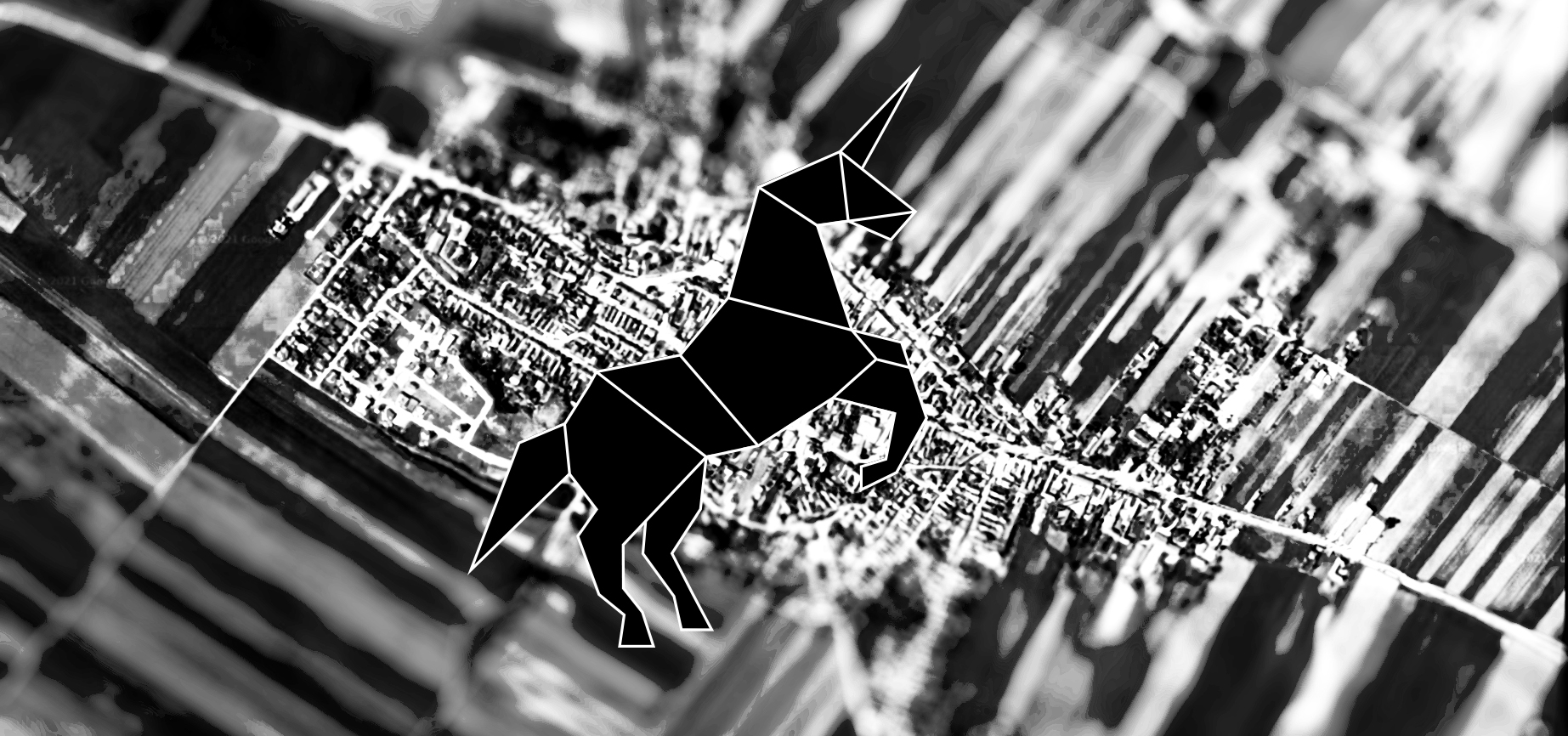 BLACK UNICORN ist der Nom de guerre der gemeinsamen Kunstprojekte von Irradiation und Michael Speer. IRRADIATION arbeitet als Klangkünstlerin, Komponistin, DJ und Mediendesignerin. Sie ist Mitbegründerin und Co-Betreiberin des 2003 ins Leben gerufenen Wiener Labels TEMP~ und des gleichnamigen Musikfestivals und hat auch selbst zahlreiche Alben veröffentlicht. In ihren eigenen musikalischen Arbeiten erforscht sie den Raum zwischen experimenteller Klangkunst und elektronischer Tanzmusik. Neben Ihren Soloarbeiten ist sie in zahlreichen Bandprojekten engagiert, darunter „Pasajera Oscura“ mit Chra oder „Hidden Shards“ mit Martina Claussen. MICHAEL SPEER ist Musiker, Komponist und Journalist in Wien. Seine Arbeiten als Klangkünstler beschäftigen sich regelmäßig mit fiktiven Soundscapes. Seine Kompositionen verbinden oft kammermusikalische Parts für traditionelle Instrumente mit experimenteller Elektronik und Field Recordings. Daneben spielt er auch selbst live – als composer/performer und in unterschiedlichen Bandformationen. BLACK UNICORN is the nom de guerre for the joint art projects of Irradation and Michael Speer. IRRADIATION works as a sound artist, composer, DJ and media designer and is the initiator and co-manager of the viennese label TEMP~ and the music festival of the same name. She has published several EP’s and two albums. Her musical work is best described as a permanent exploration of the space between repetitive and abstract electronic music. She joins the loose ends between experimental electroacoustic compositoins and electronic dance music. Her current band projects include “Pasajera Oscura” with Chra, “Hidden Shards” with Martina Claussen. MICHAEL SPEER is a composer/performer and journalist based in Vienna. His pieces are often cycles of imaginary soundscapes – electroacoustic tape pieces as well as compositions written for chamber ensembles and electronic. He also regularly performs live - solo as well as in various band constellations. Audio- & Web-Development: Martin Gasser https://martingasser.com http://www.soundcloud.com/b1ackunicorn http://www.soundcloud.com/irradiation http://www.soundcloud.com/michael_speer | |
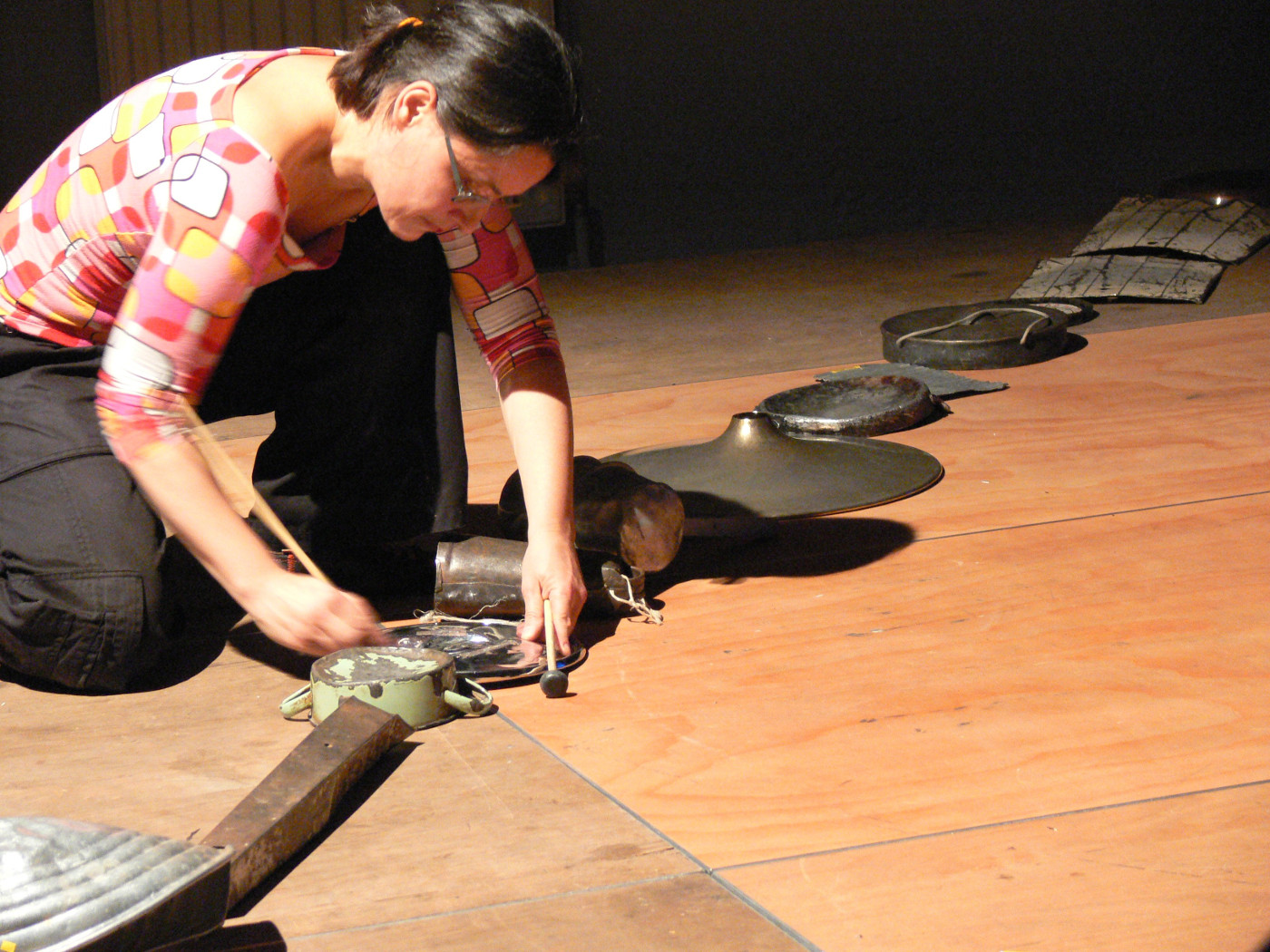
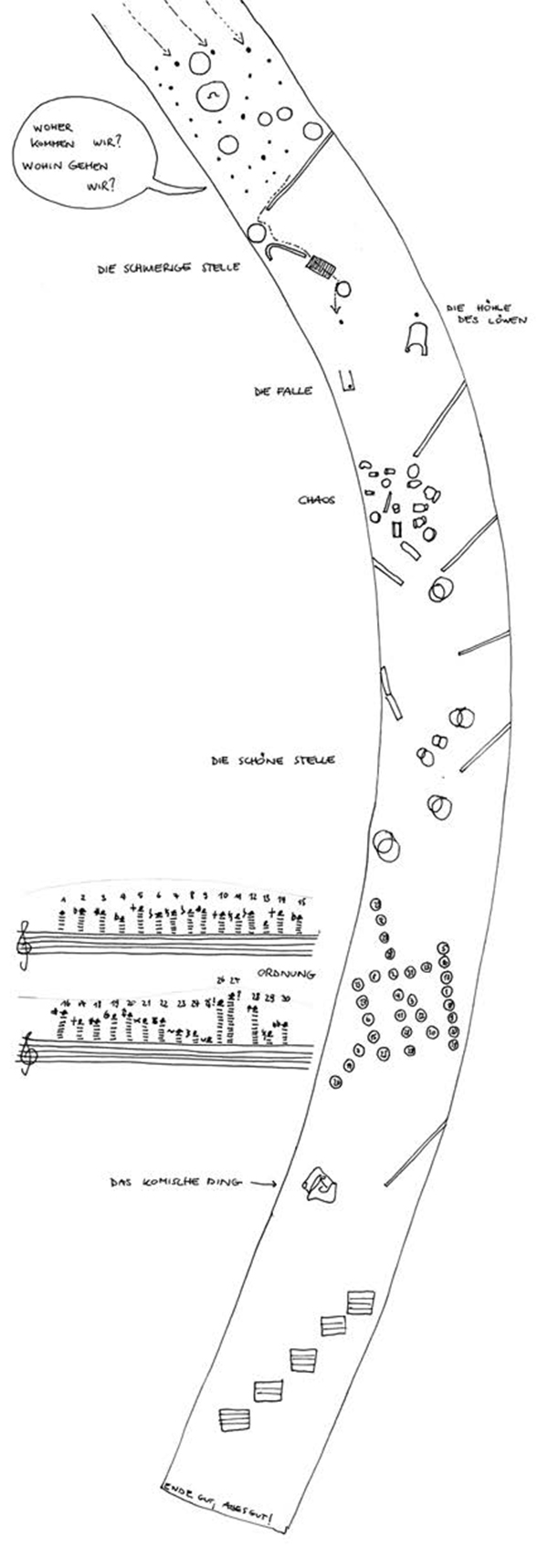
|
↑ ELISABETH FLUNGER: "MAPPA MUNDI" Die musikalische Murmelbahn Die musikalische Murmelbahn ist eine dreidimensionale musikalische Graphik und analoge Improvisationsmaschine. Verschiedene Arten von Kugeln rollen auf einer schiefen Ebene und stoßen gegen Gegenstände aus Metall. Im Gegensatz zu anderen Kugelbahnen, bei denen die Kugeln meist einen perfekten Durchlauf absolvieren müssen, ist es hier nicht so wichtig, die Wege der Kugeln vorherzubestimmen und ein Ankommen am Ende der Bahn zu garantieren. Der Weg der Murmeln ist zufällig. Sie spielen ein improvisiertes Musikstück, das am Ende sich selbst zerstört. The Musical Marble Run The musical marble run is three-dimensional musical graphic and analogue improvisation machine. Different types of balls roll on an inclined surface and bump against metal objects. In contrast to other ball tracks, where the balls usually have to complete a perfect run, here it is not so important to predetermine their paths and to guarantee arrival at the end of the track. The path of the marbles is random. They play an indeterminate piece of music that in the end destroys itself. Elisabeth Flunger ist Schlagzeugerin, Komponistin, Performerin und Klangkünstlerin und lebt in Wien. Sie spielt improvisierte und komponierte zeitgenössische Musik, arbeitet in Theater- und Tanzproduktionen, hält Improvisations- und Kompositionsworkshops für Kinder und Erwachsene und konzipiert orts- und themenspezifische spartenübergreifende Installationen und Performances. Ihr Lieblingsinstrument ist eine Ansammlung von Metallobjekten, die sie in Konzerten, Rauminstallationen und Performances verwendet. Elisabeth Flunger is a percussionist, composer and performer and lives in Vienna. She plays improvised and composed contemporary music, works in theatre and dance productions, holds improvisation and composition workshops for children and adults, and she designs site-specific and topic-oriented sound installations and performances. Elisabeth Flunger’s favourite instrument is a collection of trash metal objects, used in concerts, installations and performances. http://www.eflunger.com https://www.youtube.com/user/eflunger |
|
↑ UDO NOLL: "radio.earth - Anthropofon" "Erst vom möglichen Grenzwert der Verwüstung her ist denkbar, was die Erde als Heimat sein könnte" (Hartmut Böhme) "Only from the possible limit of devastation is it conceivable what the earth could be as a home" Anthropofone sind Anordnungen aus autonomen Live-Mikrofonen, plaziert an den Peripherien mehr oder minder beschädigter Naturen (Feld, Wald, Park, Teich, Bach…), die in listening sessions am Ort der Ausstellung sowie auf radio aporee hörbar gemacht werden. Die Raum- und Orts-Erkundung ist dabei wichtiger Teil und Voraussetzung der Arbeit. Im Hinaushören in die Klang-Atmosphären der Landschaft erfährt das geneigte Ohr möglicherweise Weitung und Resonanz und darin Erkenntnis über Lebens-Räume und ihre Verletzungen. AnthropoPhones are arrangements of autonomous live microphones, placed on the peripheries of more or less disturbed natures (field, forest, park, pond, stream...), which are made audible in listening sessions at the exhibition site and on radio aporee. The exploration of space and place is an important part and precondition of the work. Listening out into the sound atmospheres of the landscape, the receptive ear may experience widening and resonance, and in this, insight into living spaces and their violations. (Berlin, 26.6.2021, Udo Noll) 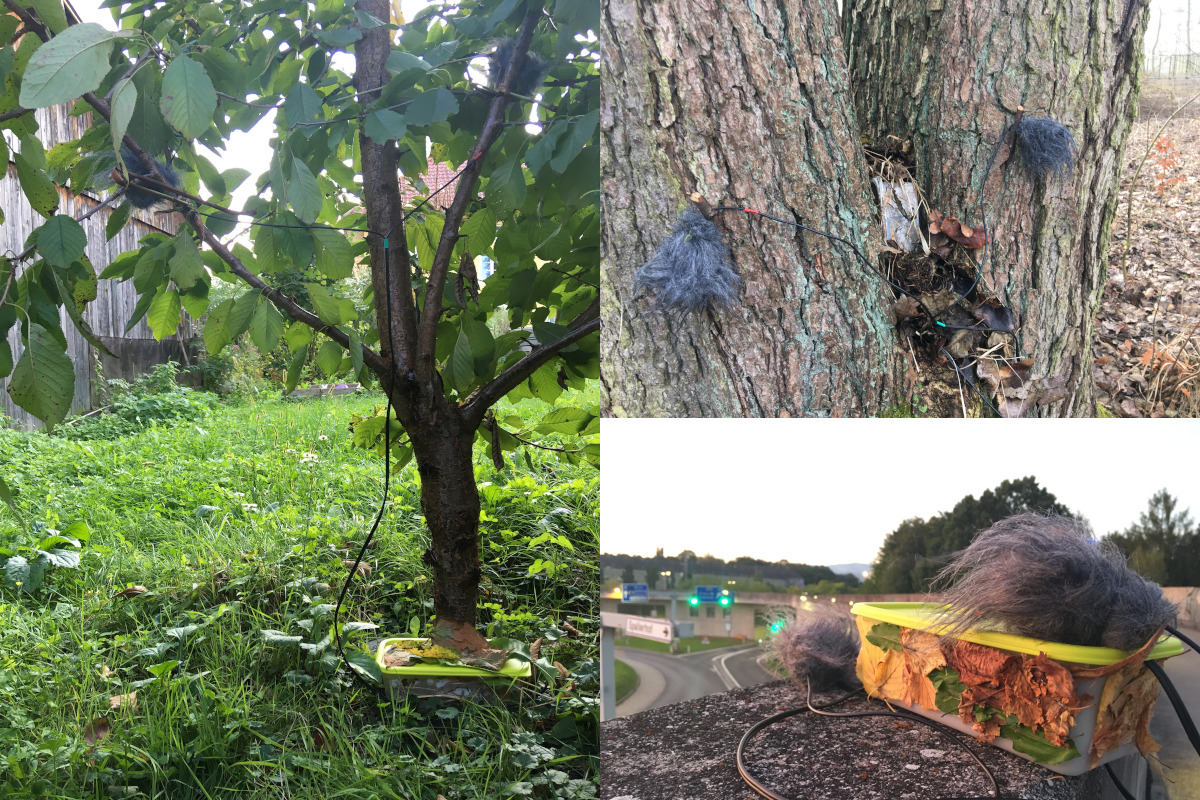
radio aporee ::: maps: https://aporee.org/maps ::: miniatures for mobiles: https://aporee.org/mfm/ ::: stream: https://radio.aporee.org ::: field radio: https://aporee.org/fieldradio Udo Noll ist Medienkünstler und absolvierte die FH Köln als Dipl. Photoingenieur. Er lebt und arbeitet in Berlin und Köln und ist u.a. Gründer und Entwickler von radio aporee, einer Plattform für Projekte und Praktiken in den Bereichen field recording / phonography, Klangkunst und experimentellem Radio. Für eine Auswahl an Arbeiten, Ausstellungen und Projekten, siehe: http://aporee.org/aporee.html Udo Noll is a media artist and graduated as a qualified engineer for photography and media technology at the Cologne University of Applied Sciences. He lives and works in Berlin and Cologne and is the founder and developer of radio aporee, a platform for projects and practice in the areas of field recording, sound art and experimental radio. For examples of his works, exhibitions and projects please see: http://aporee.org/aporee.html |
|
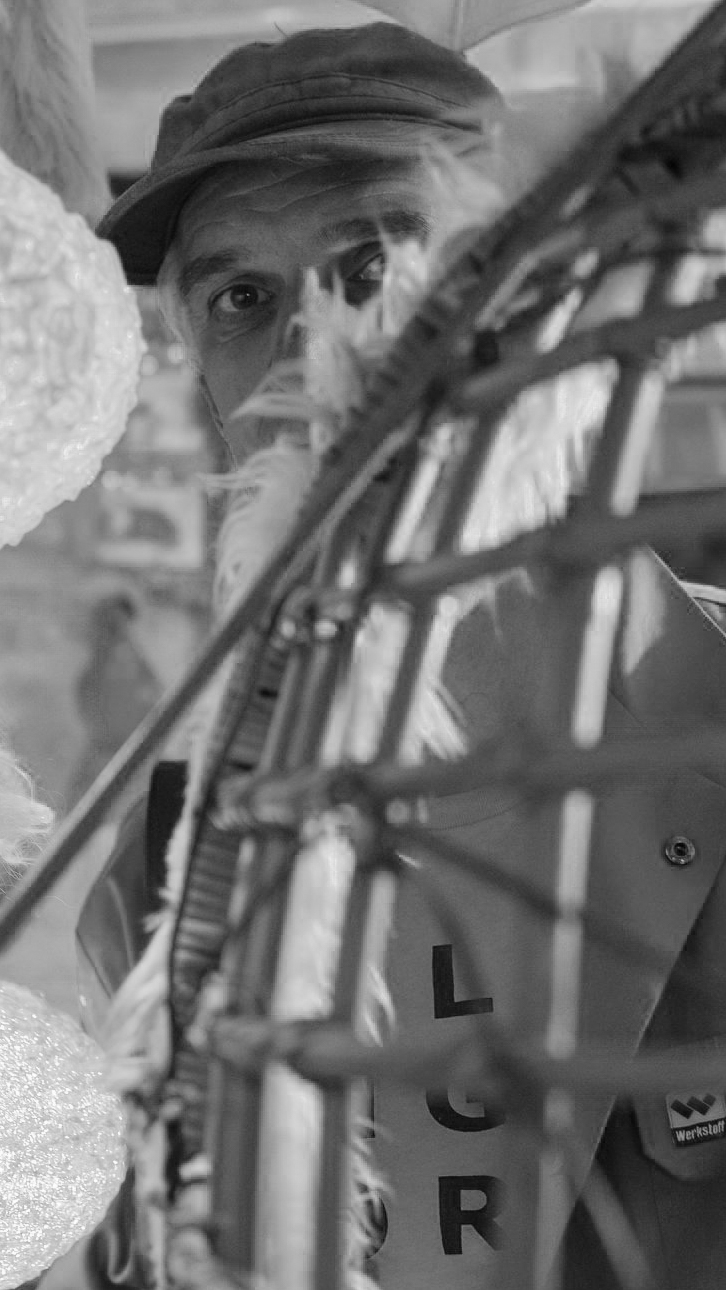
|
↑ NOID: "Versuchsanordnung zur Überwindung mittlerer Entfernungen" Seit März 2020 hat die Frage der angemessenen Distanz beim zwischenmenschlichen Kontakt unerwartet an Brisanz gewonnen; bis Dato eher Thema von Smalltalk entlang der Nord/Süd Achse erhielt die Frage plötzlich epedemologische Bedeutung und Relevanz in der Verhandlung über die Einschätzung des Infektionsgeschens. Unter Zuhilfenahme komplexer mathematischer Kurven sowie ausgesonderter technischer Einrichtungen, entsteht eine Apparatur, zur Erhöhung der Reichweite von Kommunikation. Eine Neuinterpretation des Flüsterbogens mit radikal reduziertem Materialaufwand, frei in der Landschaft platzierbar. Since March 2020, the discourse around personal space has unexpectedly gained an epidemological aspect. Furthermore it is reflecting the assessment of the pandemic. With the help of complex mathematical curves and obsolete technical equipment, an mechanical / acoustical apparatus is created to increase the range of speech based communication. A reinterpretation of the Whisper Arch with radically reduced material expenditure, freely placeable in the landscape. 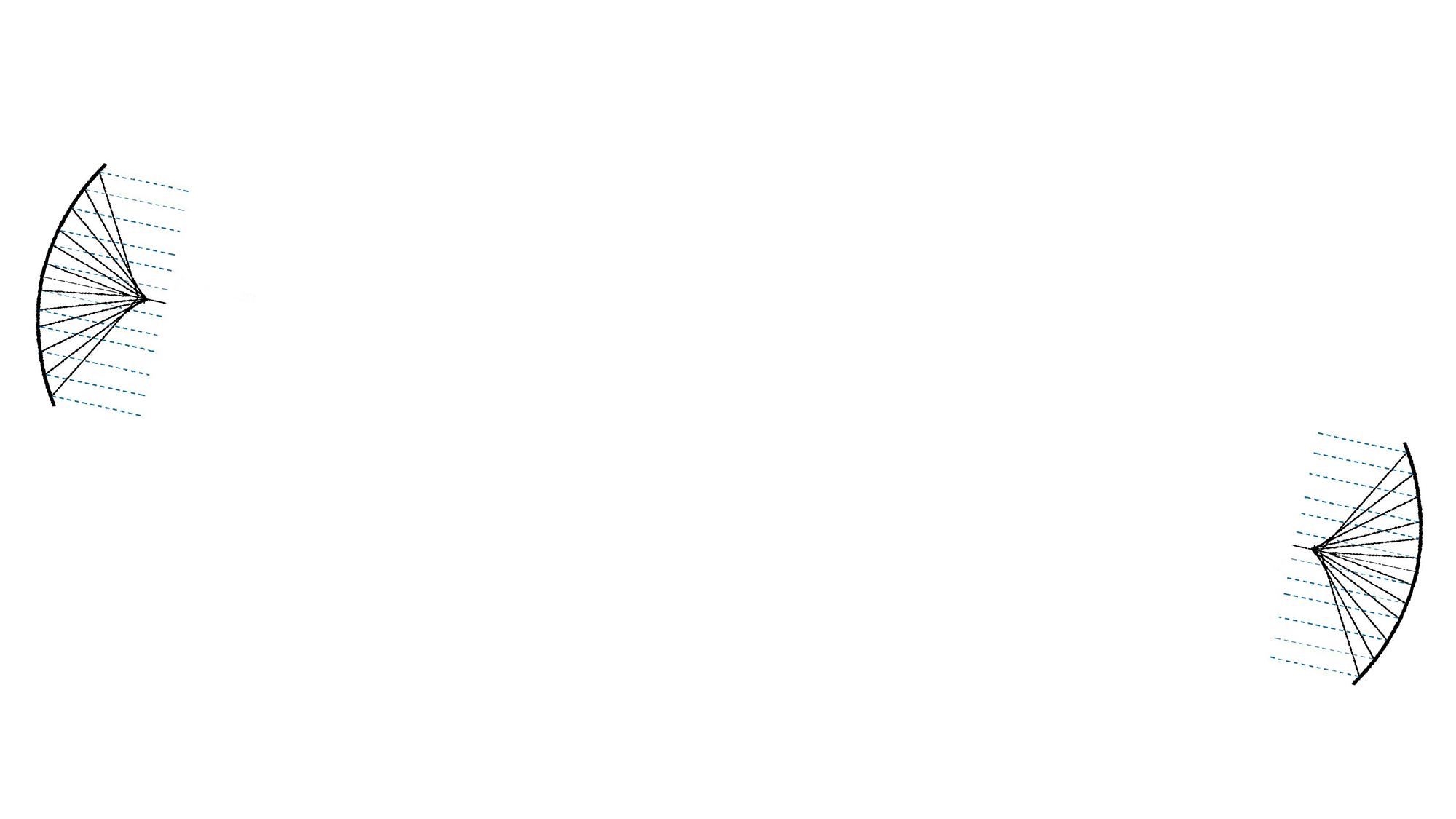
noid, a.k.a. Arnold Haberl, ist Klangkünstler, Cellist, Improvisator und Komponist. Er versteht seine Arbeit als Grundlagenforschung, die zu einer breiten Palette an widersprüchlichen Ergebnissen führt: von Cellosolos und Tonbandstücken über Ensemblekompositionen und Improvisationspartituren bis zu Performances mit elektronischen und hybriden Instrumenten, Soundinstallationen, Videos und imaginärer Musik. noid, a.k.a. Arnold Haberl is a sound artist, cellist, improviser and composer. He sees his work as basic research that leads to a wide range of contradicting results: from cello solos and tape pieces to ensemble compositions and improvisation scores to performances with electronic and hybrid instruments, sound installations, videos and imaginary music. https://noid.klingt.org |
|
↑ CHRISTINE SCHÖRKHUBER: "Gefüge / Cloud" floating Object, installation. 2019 Das „Gefüge“ ist eine amorphe, kinetische Skulptur aus Metallgewebe, in der sich eine momentane soziale Konstellation manifestiert, das aber auch einer eigenen, atmenden Logik folgt. Das Geflecht reagiert auf Veränderungen im elektrischen Feld, die durch die Gegenwart von Menschen und anderen Faktoren im Raum entstehen. Im Kontrast zur schweren Materialiät des Metalles formiert sich die Skulptur mit einer schwebenden Leichtigkeit in einer zufällig wirkenden Kumulation von feinen, leitenden Fäden in Bewegung. Das Gewebe wird zur belebten Materie, die scheinbare Wesenhaftigkeit der Struktur reflektiert das Bezugssystem einer anthropomorphen Interpretation. Strom ist nicht nur Werkzeug oder Mittel zum Zweck, es ist Material und physikalisches Medium, das als zentraler Mitspieler im künstlerischen Objekt fungiert. Es ist, nach Donna Haraway, ein anorganischer Verhandlungspartner in Prozessen und Gefügen. 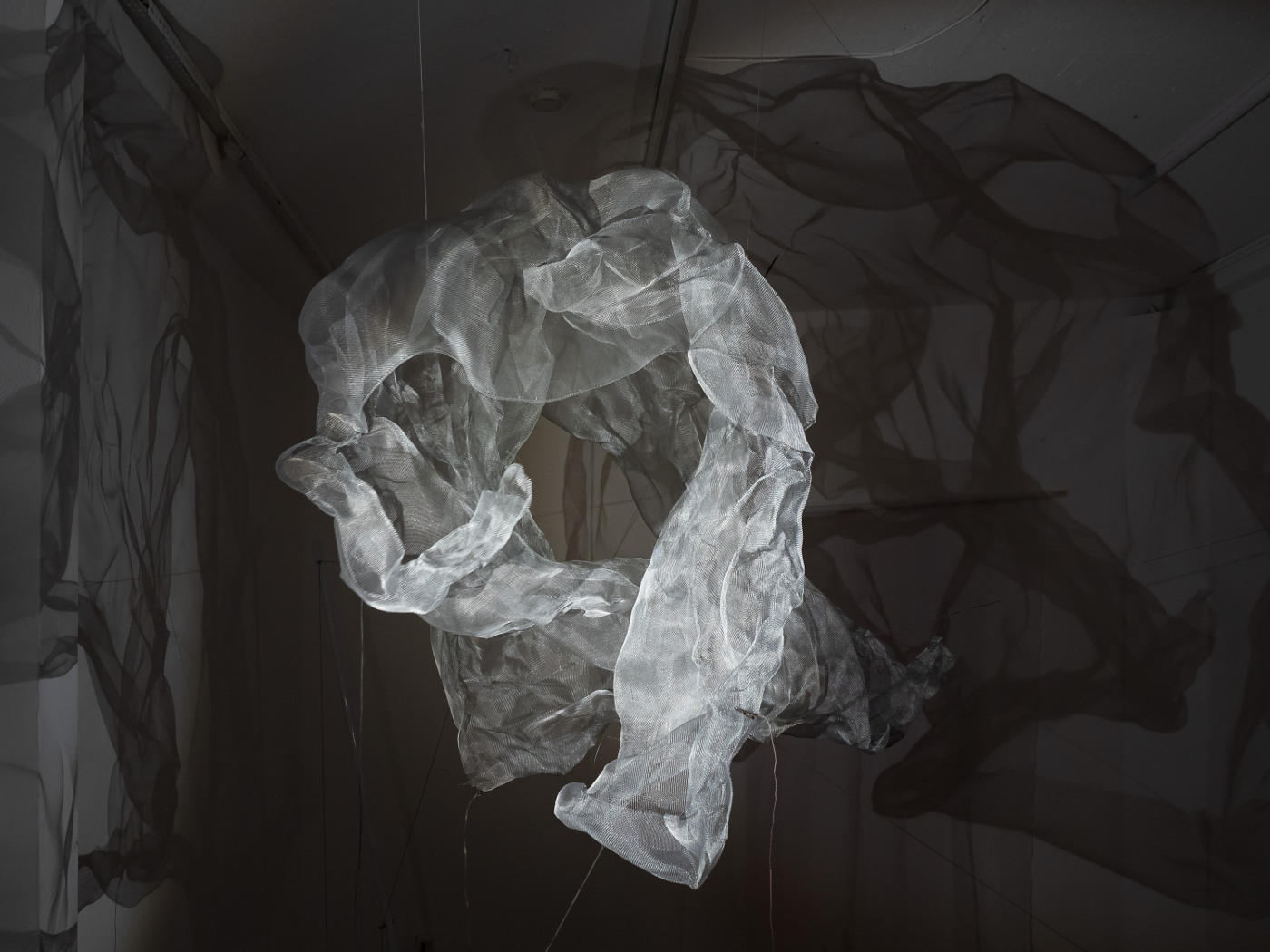
„Cloud“ is an amorphic, kinetic sculpture made of metal mesh, that enrolls a momentary social constellation, but also follows its own, pulsating logic. The mesh reacts to changes in the electric field caused by the presence of people and other factors in the room. This generates breathing movements, that vary in intensity and direction and are manifested in the shape of the metal mesh over a longer period of time. Contrasting the heavy materiality of the metal, the sculpture forms a flooating object in a random accumulation of fine, conductive threads in motion. The mesh becomes vivid matter, apparently essential, and interrogates a reference system of anthropomorphic interpretation. Electricity is not just a tool or a means to an end, it is artistic material and as a physical medium a central player in the object. Donna Haraway calls this an „anorganic negotiator in processes and structures.“ 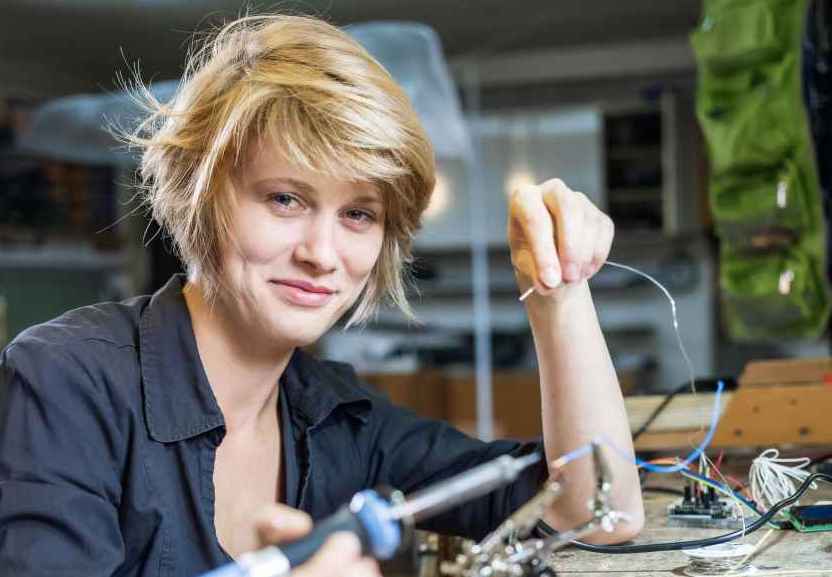
Christine Schörkhuber studierte an der Akademie der bildenden Künste Video/Videoinstallation bei Dorit Margreiter. Sie arbeitet primär mit Klang, Elektronik und Rauminstallation und beschäftigt sich mit der Dynamik von Beziehungen und Ordnungssystemen auf sozialer, physikalischer und technologischer Ebene. 2013 Startstipendium BMUKK, Neue Medien u. Videokunst, 2014/15 New Austrian Sound of Music Programm des BMEIA, 2019 Anerkennungspreis für Medienkunst des Landes Niederösterreich, SKE Publicity Award 2021. Christine Schörkhuber studied at the Academy of Fine Arts, Vienna. She works with sound, electronics and installation and is interested in the intersections of audio and visual arts and the dynamics of relations and systems on individual, sociopolitical and technological level. 2013 Startstipendium BMUKK, Neue Medien u. Videokunst, 2014/15 New Austrian Sound of Music Programm des BMEIA, 2019 Anerkennungspreis für Medienkunst des Landes Niederösterreich, SKE Publicity Award 2021. http://www.chschoe.net |
|
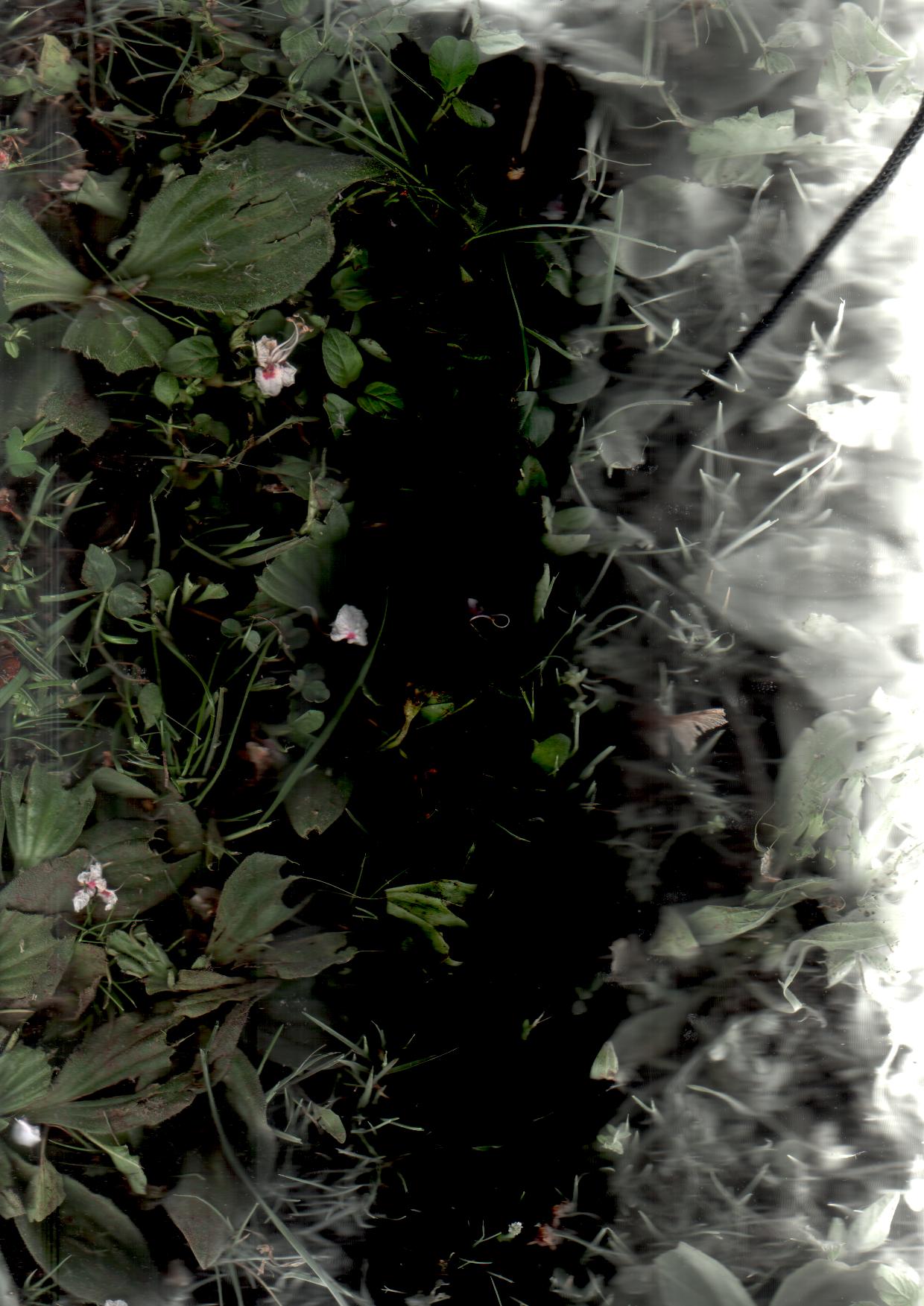
|
↑ ZENTRUM FÜR WURFKERAMIK: "Auszug aus dem Archiv" Einerseits wird Ton als ein im Boden vorkommendes Material bezeichnet, andererseits wird Ton als ein akustisches Schallereignis verstanden. Was beide Arten von Ton gemeinsam haben, ist (1) die Findbarkeit – die Suche nach spezifischen Formen von Ton, (2) die Formbarkeit – Ton ist modellierbar, wie durch einen Wurf und (3) die Archivierbarkeit – in einer Sammlung. Das Zentrum für Wurfkeramik beschäftigt sich mit diesem homonymen Tonspiel und präsentiert mehrere Tonaufzeichnungen, Tonaufnahmen und Tongefäße aus dem Archiv. On the one hand, the German word "Ton" describes material found in the soil, on the other hand, "Ton" is understood as an acoustic sound event. What both types of "Ton" have in common is (1) findability - the search for specific forms of "Ton", (2) malleability - "Ton" can be modelled, for example by throwing, and (3) archivability - in a collection. The Zentrum für Wurfkeramik deals with this homonymous play of "Ton" and presents several "Ton"-recordings and "Ton"-vessels from the archive. Das Zentrum für Wurfkeramik erforscht und etabliert die Methode der Wurfkeramik seit 2019. The Zentrum für Wurfkeramik has been researching and establishing the method of throwing ceramics since 2019 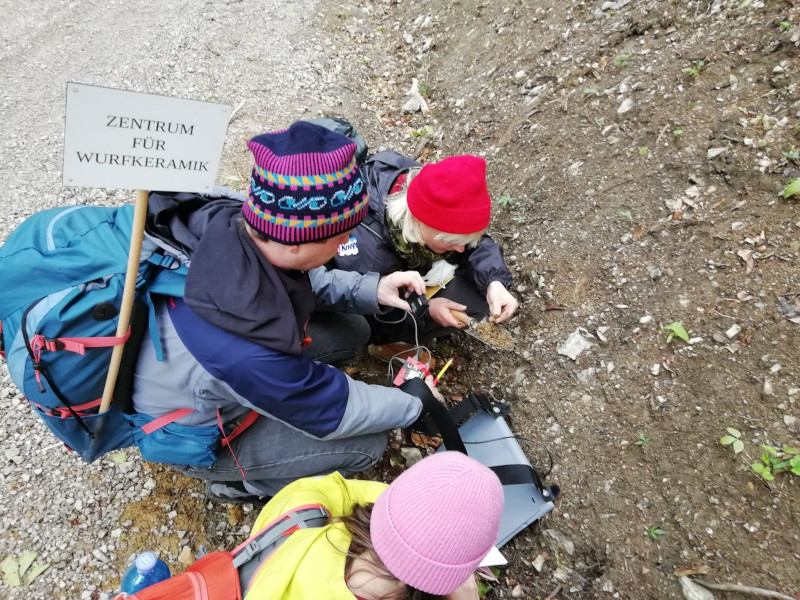
https://zentrum.wurf.at |
↑